
Senior writer Tina Hesman Saey is a geneticist-turned-science writer who covers all things microscopic and a few too big to be viewed under a microscope. She is an honors graduate of the University of Nebraska-Lincoln where she did research on tobacco plants and ethanol-producing bacteria. She spent a year as a Fulbright scholar at the Georg-August University in Göttingen, Germany, studying microbiology and traveling. Her work on how yeast turn on and off one gene earned her a Ph.D. in molecular genetics at Washington University in St. Louis. Tina then rounded out her degree collection with a master’s in science journalism from Boston University. She interned at the Dallas Morning News and Science News before returning to St. Louis to cover biotechnology, genetics and medical science for the St. Louis Post-Dispatch. After a seven year stint as a newspaper reporter, she returned to Science News. Her work has been honored by the National Academies of Sciences, Engineering and Medicine, the Endocrine Society, the Genetics Society of America and by journalism organizations.

Trustworthy journalism comes at a price.
Scientists and journalists share a core belief in questioning, observing and verifying to reach the truth. Science News reports on crucial research and discovery across science disciplines. We need your financial support to make it happen – every contribution makes a difference.
All Stories by Tina Hesman Saey
-
 Health & Medicine
Health & MedicineTreating cystic fibrosis patients before birth could safeguard organs
Starting a cystic fibrosis drug sooner than usual may protect an afflicted child’s lungs, pancreases and reproductive tissue, a study in ferrets hints.
-
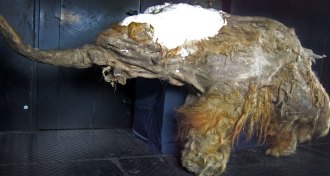 Genetics
GeneticsResurrecting woolly mammoth cells is hard to do
Japanese scientists say some proteins in frozen mammoth cells may still work after 28,000 years. But that activity may be more mouse than mammoth.
-
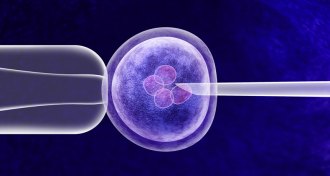 Genetics
GeneticsGeneticists push for a 5-year global ban on gene-edited babies
Prominent scientists are using the word “moratorium” to make it clear that experiments to create babies with altered genes are wrong, for now.
-
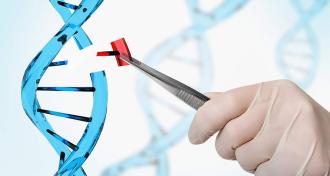 Genetics
GeneticsA CRISPR spin-off causes unintended typos in DNA
One type of CRISPR gene editor makes frequent and widespread mistakes, studies in mice and rice reveal.
-
 Life
LifeEating a lot of fiber could improve some cancer treatments
A high-fiber diet, which boosts the diversity of gut microbes, may make an immune therapy against skin cancer more effective.
-
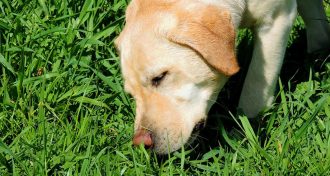 Genetics
GeneticsGenes might explain why dogs can’t sniff out some people under stress
Genes and stress may change a person’s body odor, confusing police dogs.
-
 Genetics
GeneticsA long handshake can spread your DNA to objects you didn’t touch
Two new studies show that even brief contact with another person or object could transfer your DNA far and wide.
-
 Health & Medicine
Health & MedicineIn some cases, getting dengue may protect against Zika
A Zika outbreak in a Brazilian slum suggests that the timing of dengue infections may matter for protection against Zika.
-
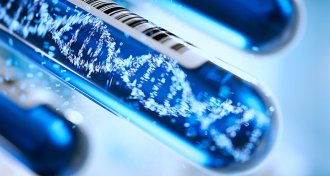 Genetics
GeneticsWhat FamilyTreeDNA sharing genetic data with police means for you
Law enforcement can now use one company’s private DNA database to investigate rapes and murders.
-
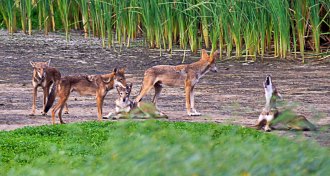 Genetics
GeneticsDNA from extinct red wolves lives on in some mysterious Texas coyotes
Mystery canids on Texas’ Galveston Island carry red wolf DNA, thought to be extinct in the wild for 40 years.
-
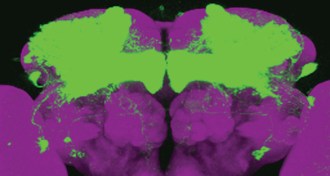 Genetics
GeneticsThis bacteria-fighting protein also induces sleep
A bacteria-fighting protein also lulls fruit flies to sleep, suggesting links between sleep and the immune system.
-
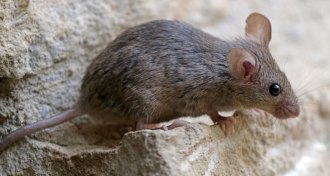 Genetics
GeneticsA CRISPR gene drive for mice is one step closer to reality
Researchers have made progress toward creating a gene drive for mice in the lab. Such genetic cut-and-paste machines have yet to be made for mammals.